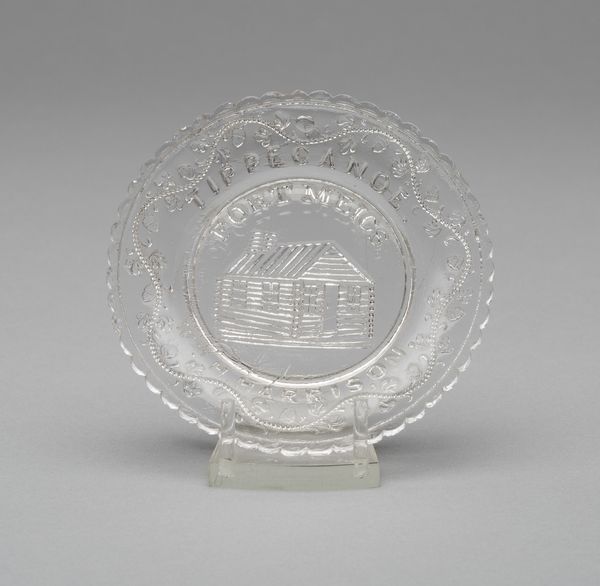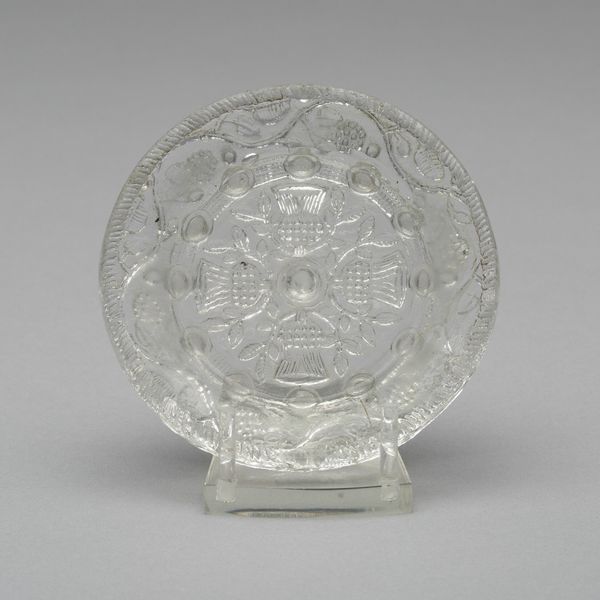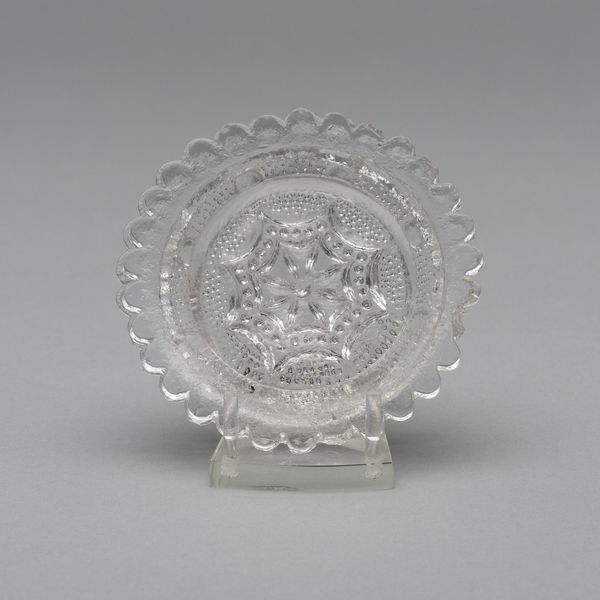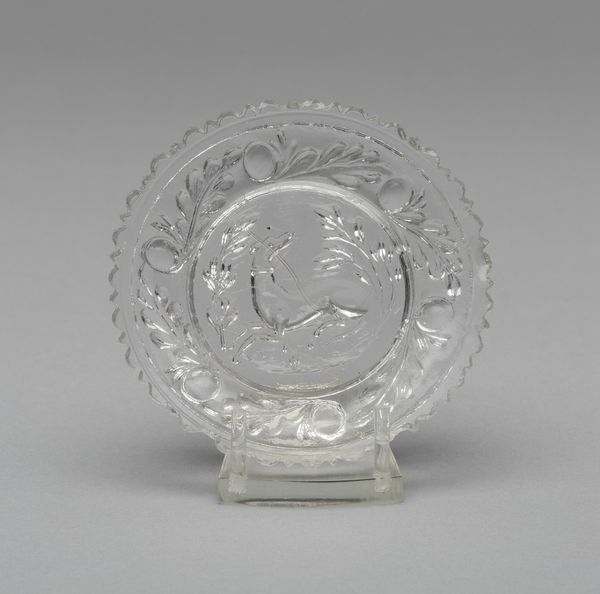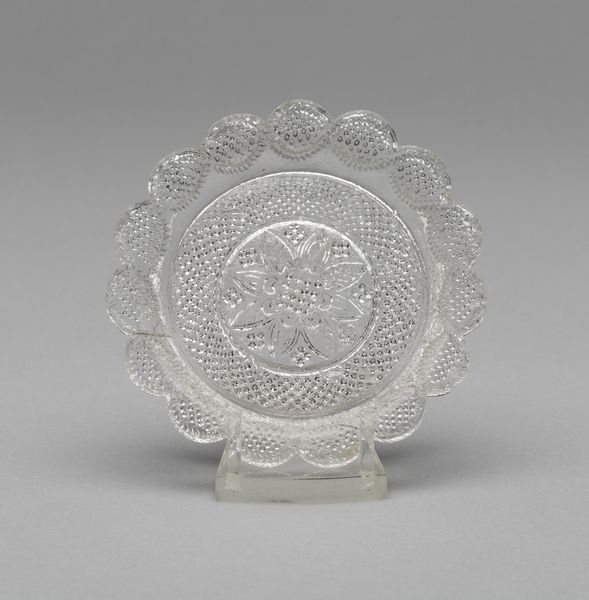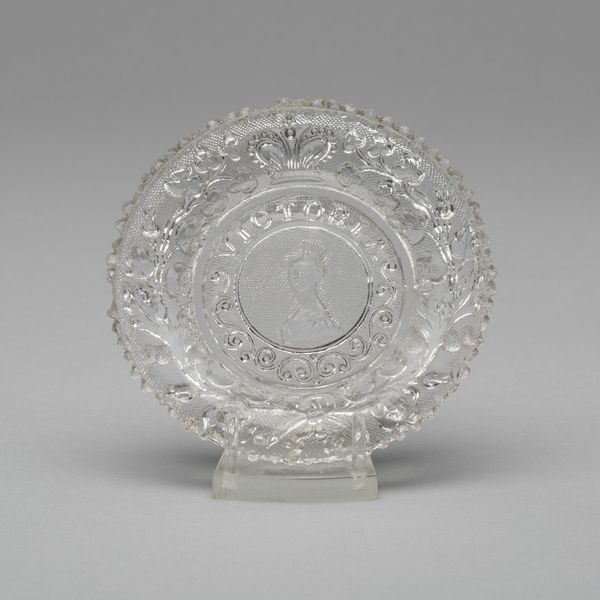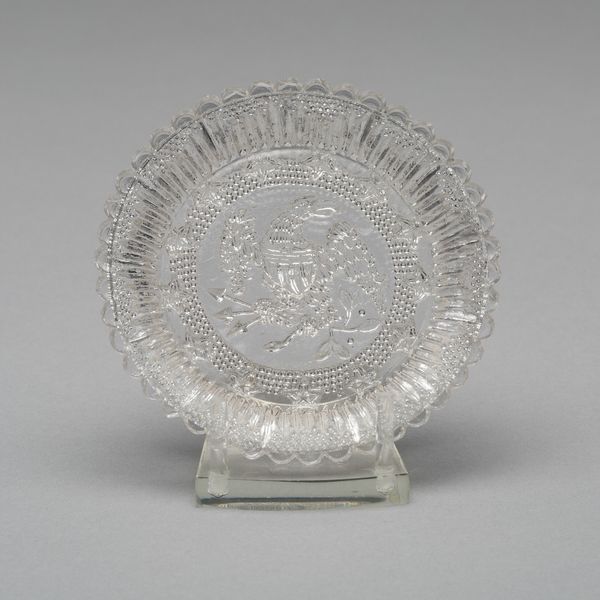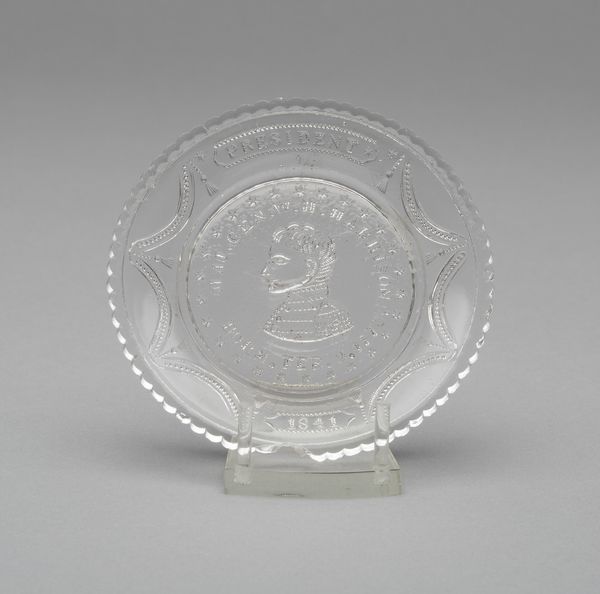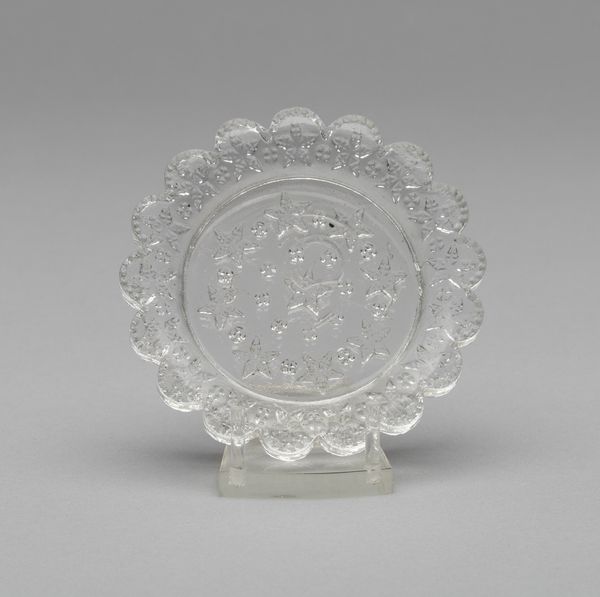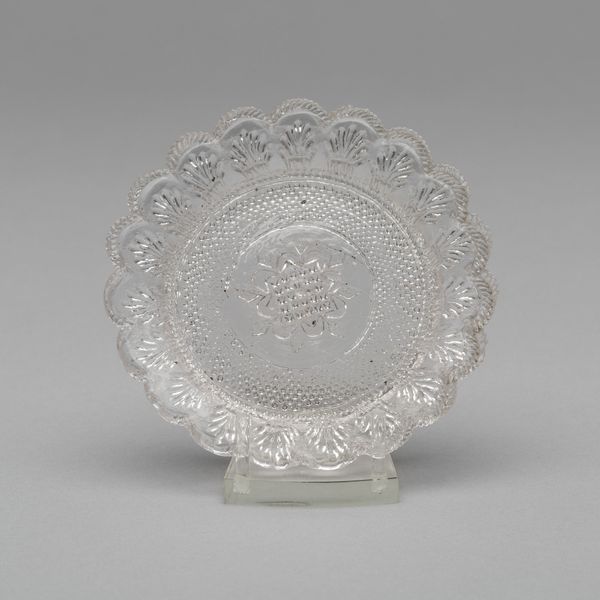
glass
#
glass
#
decorative-art
Dimensions: diam. 7.6 cm (3 in.)
Copyright: Public Domain
Editor: Here we have a glass cup plate, made sometime between 1830 and 1835. It’s a delicate piece of decorative art, anonymous, and it seems to feature a beehive design in the center. What associations does this piece bring up for you? Curator: This little plate offers a fascinating window into the values of the early American Republic. The beehive motif was immensely popular, symbolizing industry, cooperation, and communal labor. It served as a potent emblem of the era’s vision for a thriving society built on collective effort. Can you see the resonance with the period’s emphasis on democratic participation and self-governance? Editor: Yes, I hadn’t considered the political implications, but that makes perfect sense! So it’s less about bees and honey, and more about an idealized social structure? Curator: Precisely! Consider the socio-economic context: early industrialization, the rise of a merchant class, and evolving notions of citizenship. This seemingly simple object encapsulates aspirations for a harmonious and prosperous society through hard work and shared goals. The very act of producing these glass objects, often by immigrant artisans, speaks to America's evolving identity. Who was included in the narrative of collective progress, and who was excluded? Editor: That reframes the whole piece for me. I was seeing it as a charming, almost quaint object. Now, I realize it reflects larger social and political ideologies about what America wanted to be. Curator: Exactly! It prompts critical inquiry into how symbols are used to promote specific narratives and reinforce power structures, and questions around which historical agents these types of symbolic narratives served to embolden, or actively obscure. Even the choice of glass is meaningful. What does the fragility or transparency signify? Editor: I’m definitely walking away seeing more than just a pretty plate! Thanks, that’s given me a lot to think about. Curator: My pleasure. It’s crucial to look at everyday objects to examine the undercurrents of society at any given time.
Comments
No comments
Be the first to comment and join the conversation on the ultimate creative platform.
